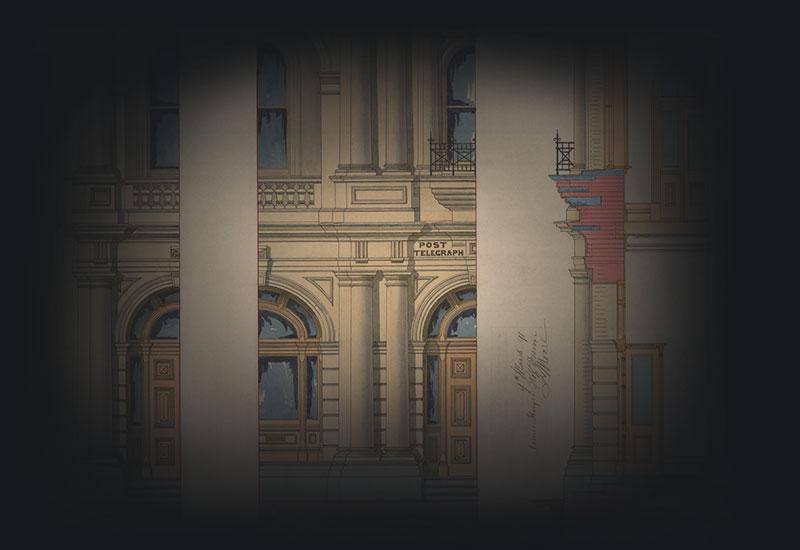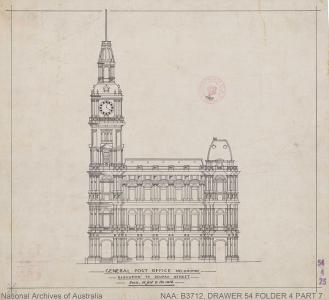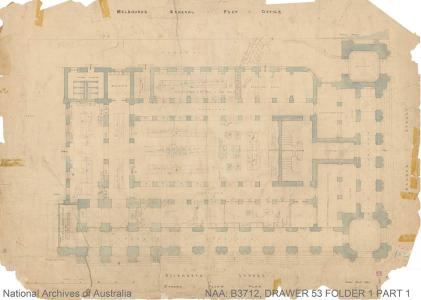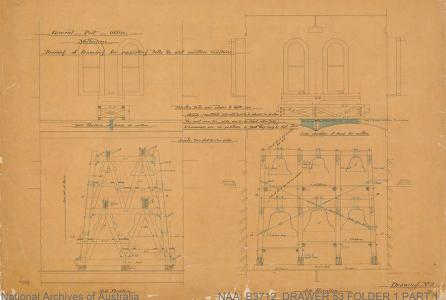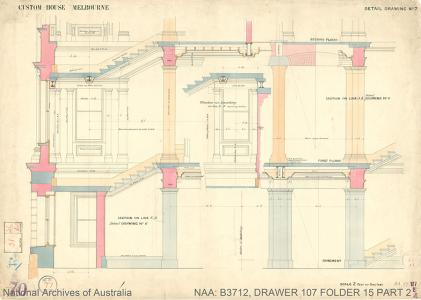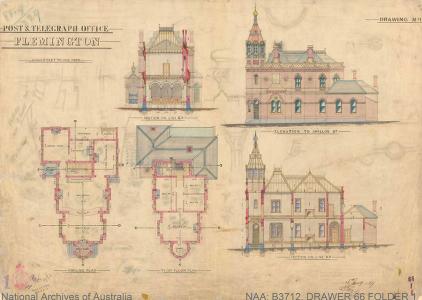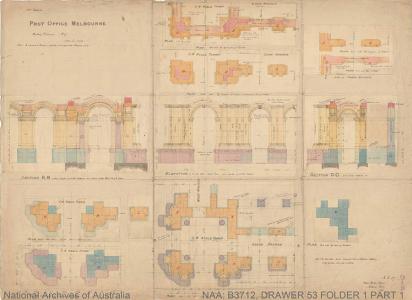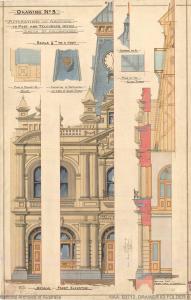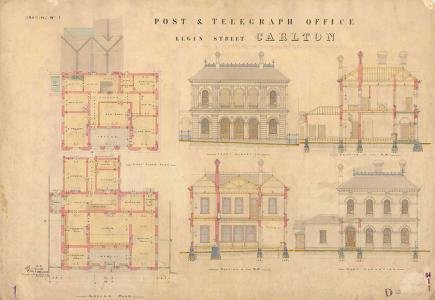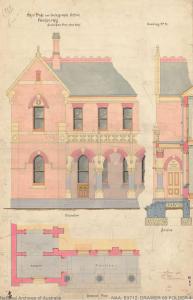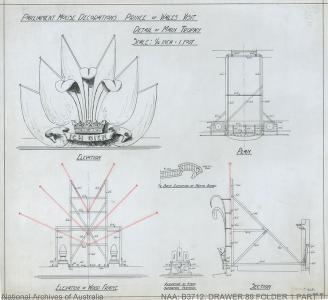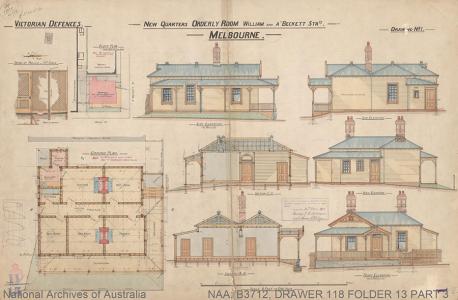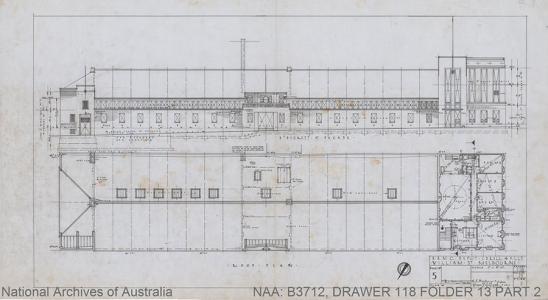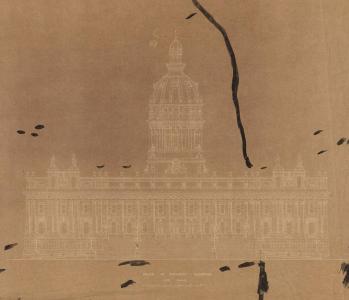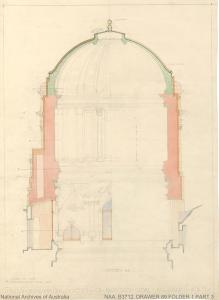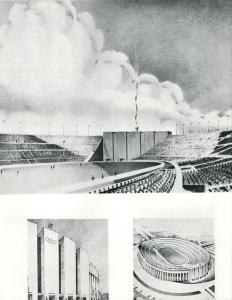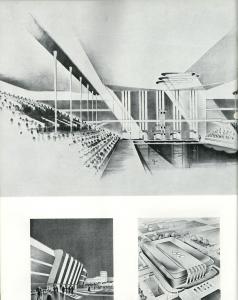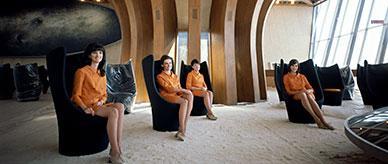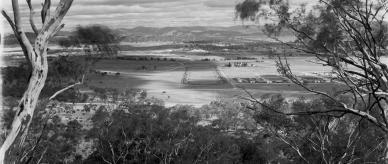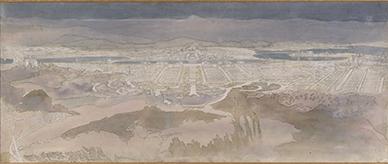Reflecting its rich history and culture, Melbourne is renowned for its amazing public architecture. Gems range from local post offices to iconic landmarks such as the Exhibition Building and former General Post Office (GPO).
Windows into a city's history
The designs of many buildings once owned or leased by the Australian Government across Melbourne (and the rest of Victoria) are documented in series B3712 – Folders of Construction Drawings.
The drawings include elevations, schematics, floor plans, cross-sections and engineering and mechanical layouts.
Collectively, these and other records in the collection (such as historic photographs) provide 'windows' into the history of Melbourne as a city.
The earliest drawings date from the 1850s and relate to buildings which were built by the colonial Victorian government and later transferred to the Australian Government.

